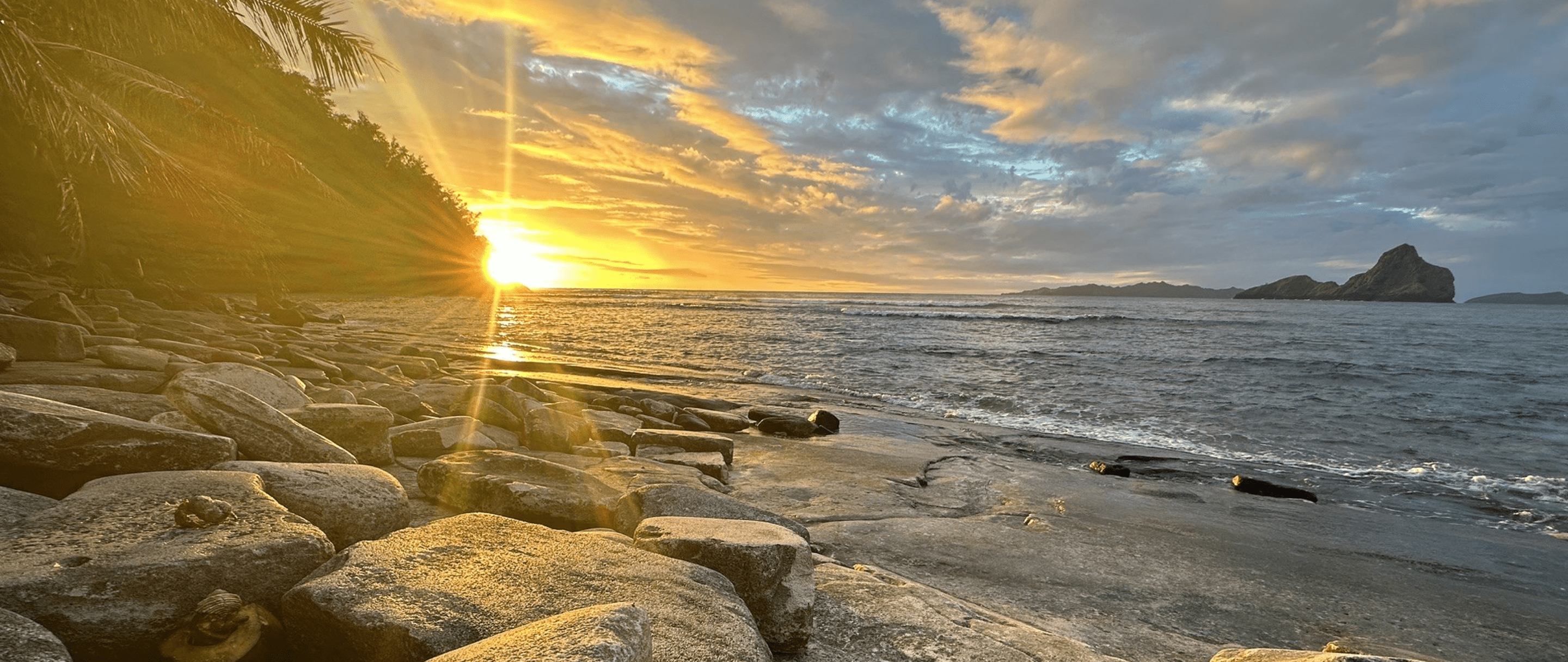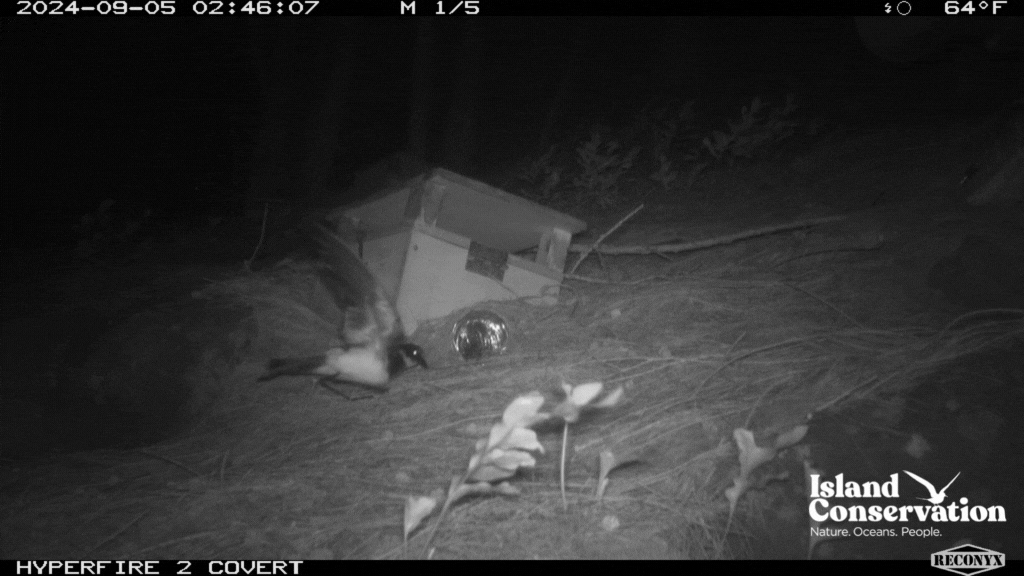March 11, 2025
Press Release: New eDNA Tool Can Detect Invasive Rodents Within an Hour
New environmental DNA technology can help protect vulnerable island ecosystems from destructive invasive species.
We use cookies to help you navigate efficiently and perform certain functions. You will find detailed information about all cookies under each consent category below.
The cookies that are categorized as "Necessary" are stored on your browser as they are essential for enabling the basic functionalities of the site. ...
Necessary cookies are required to enable the basic features of this site, such as providing secure log-in or adjusting your consent preferences. These cookies do not store any personally identifiable data.
Functional cookies help perform certain functionalities like sharing the content of the website on social media platforms, collecting feedback, and other third-party features.
Analytical cookies are used to understand how visitors interact with the website. These cookies help provide information on metrics such as the number of visitors, bounce rate, traffic source, etc.
Performance cookies are used to understand and analyze the key performance indexes of the website which helps in delivering a better user experience for the visitors.
Advertisement cookies are used to provide visitors with customized advertisements based on the pages you visited previously and to analyze the effectiveness of the ad campaigns.
Our new online shop is live!


Endangered Polynesian storm-petrels, ground-nesting seabirds also known as White-throated storm-petrels, are returning to Kamaka Island, French Polynesia after 100+ years absence thanks to a successful restoration and rewilding project by Island Conservation, Société d’Ornithologie de Polynésie (SOP Manu), the Reasin family, and the Mangareva Community as part of the Island-Ocean Connection Challenge.
Once widespread across the south Pacific, Polynesian storm-petrel populations have dwindled due to invasive species such as rats. These predators pose a significant threat to the survival of this seabird species, driving them to the brink of extinction.
“With only 250-1,000 mature individuals estimated to remain in the wild, the restoration of Kamaka Island in the Gambier Archipelago is crucial for the global recovery of the Polynesian storm-petrel,” said Coral Wolf, Conservation Impact Manager at Island Conservation. “The quick return of these birds scouting for future nesting sites provides an outstanding opportunity to establish another secure breeding population.”

The return of these seabirds is the result of an ambitious project that deployed drones to remove invasive rodents from Kamaka Island, allowing endangered birds to return to what is now a secure breeding site. To attract the Polynesian storm-petrels to Kamaka Island, the team installed two solar-powered sound systems, ready to live in burrows for nesting and motion-sensing cameras. The sound systems, designed by Eric Vanderwerf of Pacific Rim Conservation, broadcast recorded sounds from the nearby Manui Island storm-petrel colony, while the cameras document seabird activity. The four ‘luxury’ burrows were constructed to facilitate monitoring and improve nesting habitat.
After the deployment of sound systems in March just prior to the start of the breeding season, cameras detected individuals visiting one of the sites, once in April and another in May. By June, and through the remainder of the breeding period storm-petrels were visiting both sound systems and began spending time in the nest boxes.
“The results of our social attraction efforts were quickly apparent – Polynesian storm-petrels began visiting at the start of the nesting season and became regular visitors, while also spending time in the nest boxes,” said Thomas Ghestemme from SOP MANU. “In total, six seabird species are now confirmed as breeding on the island, with two other species likely, including the IUCN Near Threatened Tahiti Petrel. This species, if confirmed, will be a new addition to Kamaka’s breeding seabirds list.”
This project was generously funded by the National Fish and Wildlife Foundation, the David and Lucile Packard Foundation, and dedicated conservation supporters like you. The Kamaka Island Restoration Project is part of the Island-Ocean Connection Challenge founded by Island Conservation, Re:wild, and Scripps Institution of Oceanography which aims to begin restoring 40 globally significant island-ocean ecosystems by 2030. Kamaka Island was restored thanks to the support of European Union (BEST+) and Island Conservation donors.
“This remarkable progress brings hope for the future, as the Polynesian storm-petrels reclaim their island home,” said Tehotu Reasin, landowner of Kamaka Island. “These seabirds bring critical nutrients from the ocean to the island, which cascades down into the surrounding marine environment benefiting fish and corals. The entire ecosystem can once again thrive.”
### ### ###
Island Conservation: Sally Esposito, Strategic Communications Director
Sally.esposito@islandconservation.org +1 706 969 2783
Interviews by request
Photos and videos (credit: Island Conservation)
Island Conservation
Island Conservation’s mission is to restore islands for nature and people worldwide and we collaborate with local communities, government management agencies, and conservation organizations on islands with the greatest potential for preventing the extinction of globally threatened species. Island Conservation is a United States-based 501(c)(3) charitable organization that restores islands by removing introduced, damaging invasive species and accelerating the recovery of native plants and animals. We utilize innovative technology and techniques to work more efficiently and showcase the many benefits of holistically restored islands for biodiversity, climate resilience, ocean health, and sustainable development across the globe. Visit us at islandconservation.org.
SOP MANU
SOP MANU is a grassroot organization, based in French Polynesia and created in 1990, that aims to study and protect birds, together with their habitat. We work closely with communities to increase their capacities to implement conservation of local threatened birds. Emergencies are multiple as 24 species are globally endangered in French Polynesia, including 9 critically status. SOP MANU is recognized as general interest organization, and work closely with government and other stakeholders for the benefit of the birds. Visit us at https://www.manu.pf/.
Re:wild
Re:wild protects and restores the wild. We have a singular and powerful focus: the wild as the most effective solution to the interconnected climate, biodiversity and human wellbeing crises. Founded by a group of renowned conservation scientists together with Leonardo DiCaprio, Re:wild is a force multiplier that brings together Indigenous peoples, local communities, influential leaders, nongovernmental organizations, governments, companies and the public to protect and rewild at the scale and speed we need. Learn more at rewild.org.
Check out other journal entries we think you might be interested in.
Notifications